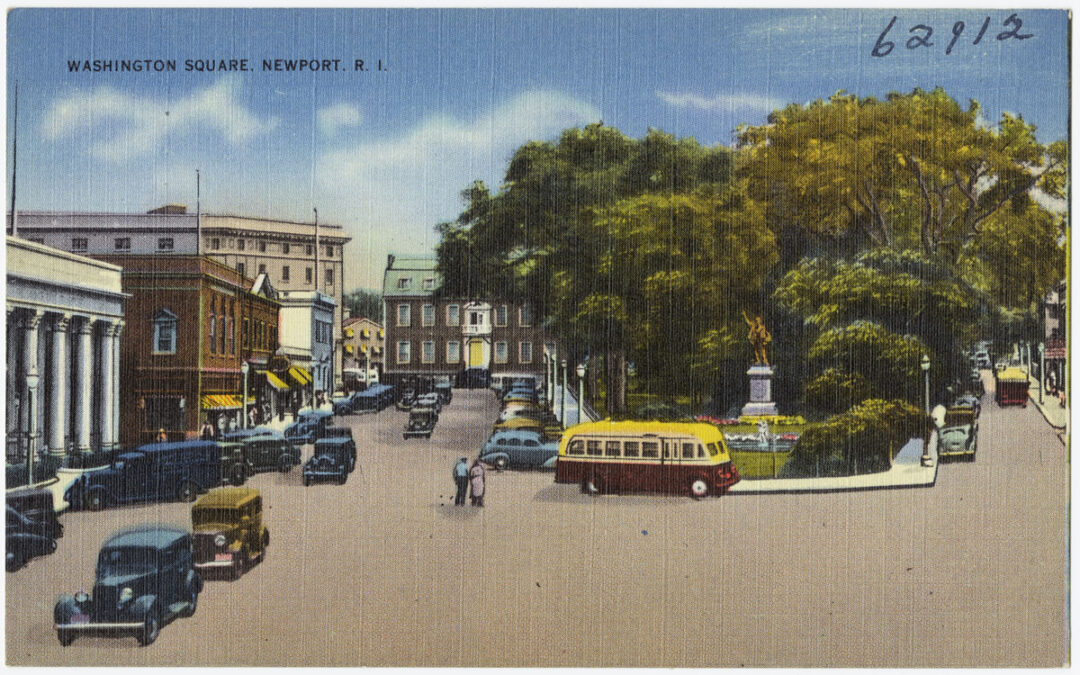In 2010, the City Council pledged to make Newport a “Complete Streets” community and this largely unheralded event has slowly been changing the way public projects are designed. Complete Streets is a principle developed by the Smart Growth planning movement, and states that roadways and sidewalks should be designed with “all users in mind – including bicyclists, public transportation, vehicles and riders, and pedestrians of all ages and abilities.” This is a part of the larger Smart Growth goal to integrate housing, work, and shopping into compact development areas that maximize the efficiency of land use and minimize the amount of vehicular traffic needed to make the community function well.
This policy is basically a complete reversal of the planning approach that has been predominant in the United States from the Second World War to about twenty years ago, where the primary focus was trying to accommodate the most number of vehicles, maximize their velocity from one location to another and to create large surface parking lots to accommodate the vehicles once they had reached destination buildings dedicated to a single-use. This planning resulted in the development of suburban sprawl as zones dedicated to a single use like residential, commercial, or office becames larger and therefore more physically separated from one another. This of course necessitated that people spend more time commuting from one zone to another. The development of America’s Cup Boulevard is one example of a project where the assumed needs of vehicular traffic were accommodated with little concern or thought to the negative impact the project would have on the pedestrian connection of residential neighborhoods to their historic waterfront.
Despite the enormous amount of poorly conceived suburban development that has occurred in the last sixty years, fortunately, many communities were developed long before World War II by traditional principles that integrated many uses into mixed use zones where people could walk from their homes to stores or even lives above their shops. This traditional style of designing cities and towns is often (and ironically) called “New Urbanism” after a group that sought to revive more time-honored planning principles. This alternate approach has regained prominence and acceptance in the past twenty years but it still has an uphill clim to repair and replace fifty years of careless suburban development.
One of the central elements of Complete Street is to accommodate bicyclists. The Newport City Council has made a resolution to be the first certified “Bicycle Friendly” community in the state of Rhode Island, which is one of only two states not to have such a community currently. As part of this larger goal, the city of Newport has recently created a “Bicycle and Pedestrian Commission.” This group was built upon the work of Bari George and Bike Newport, a non-profit group that provides advocacy to bicyclists within the community. Among the activities that they have arranged is Bike to Work day this past May 17 when many people took the occasion as an opportunity to leave their car at home and commute to town (and participate in an after-work ride) on their bicycles. The Bike Newport group has also arranged the restriping of roadways to make them safer for bicycles after the death of a bicyclist on Memorial Boulevard by the first beach last year and is organizing the first annual Elliot Kaminitz Father’s Day Bike Ride on June 16th in his memory.
This past month GrowSmart Rhode Island and the Coalition for Transportation Choices (CTC) sponsored a statewide workshop for planners and commissioners from across Rhode Island to hear from Mark Fenton, the host of public television’s “America’s Walking” and from Michael Lewis, the director of the RI Department of Transportation. In this event the sponsoring groups reaffirmed their support of “Complete Streets”, the use of Roundabouts to support pedestrian safety, and observe that the explosion of obesity among Americans caused by a lack of walking has created is among the nation’s most pressing health care issues. It also emphasized that urban design should not only work to design streets that are safe for all users but to help create ones where people will enjoy walking, biking, shopping, working, and living so they will actually get people out of their cars. To its good fortune, Newport has always been just such a place and with the efforts of the new Bicycle and Pedestrian Commission and the implementation of the Complete Streets principles into future roadway projects, the future of our community can be even brighter still – for everyone!
Looking to remodel your home? Let’s connect.
Join the Architectural Forum to stay up-to-date with architectural news from Rhode Island and abroad.
Ross Sinclair Cann, AIA is a historian, educator, and practicing architect living and working in Newport. This article was initially published in ARCHI-TEXT, in Newport This Week, May 23, 2013.
